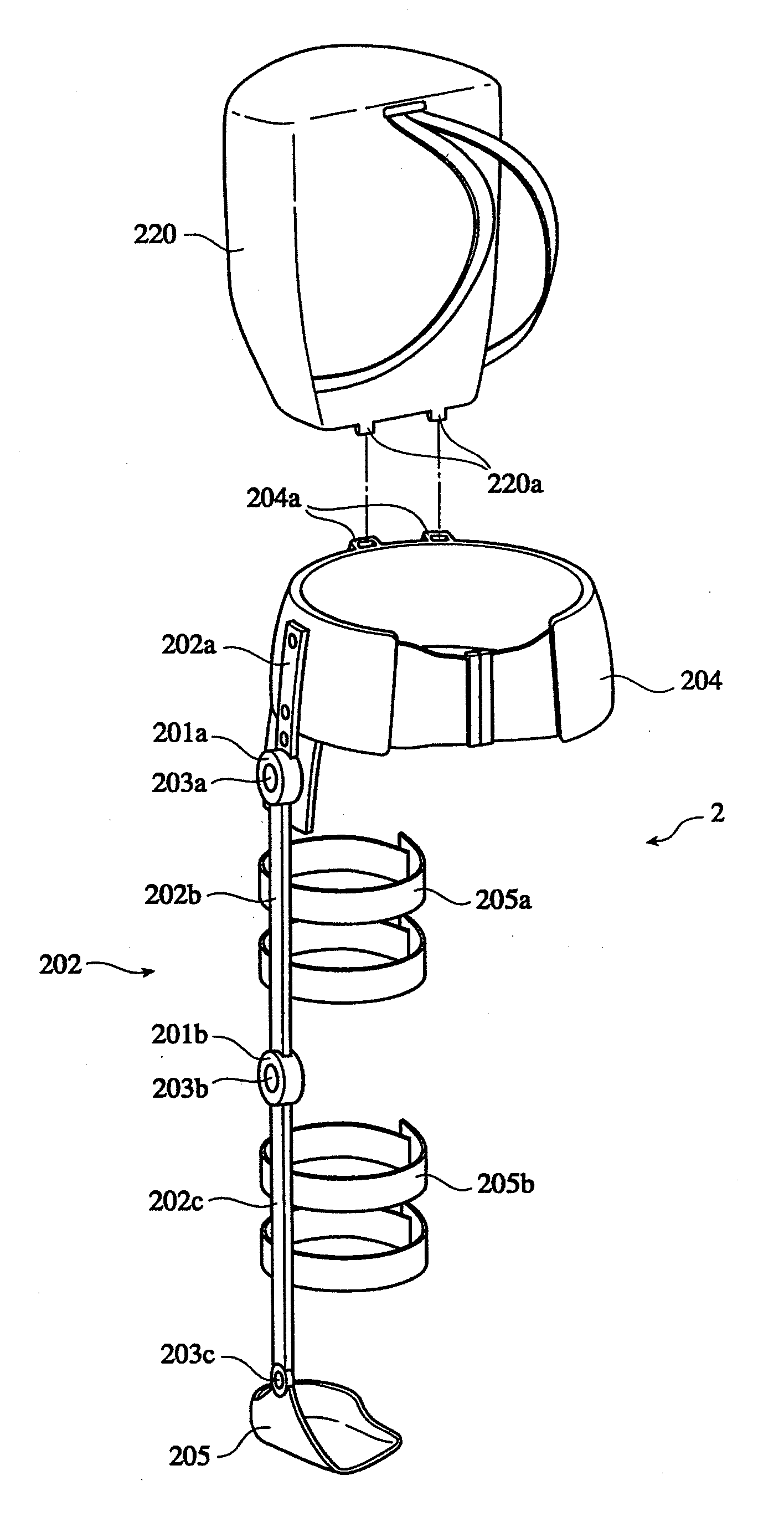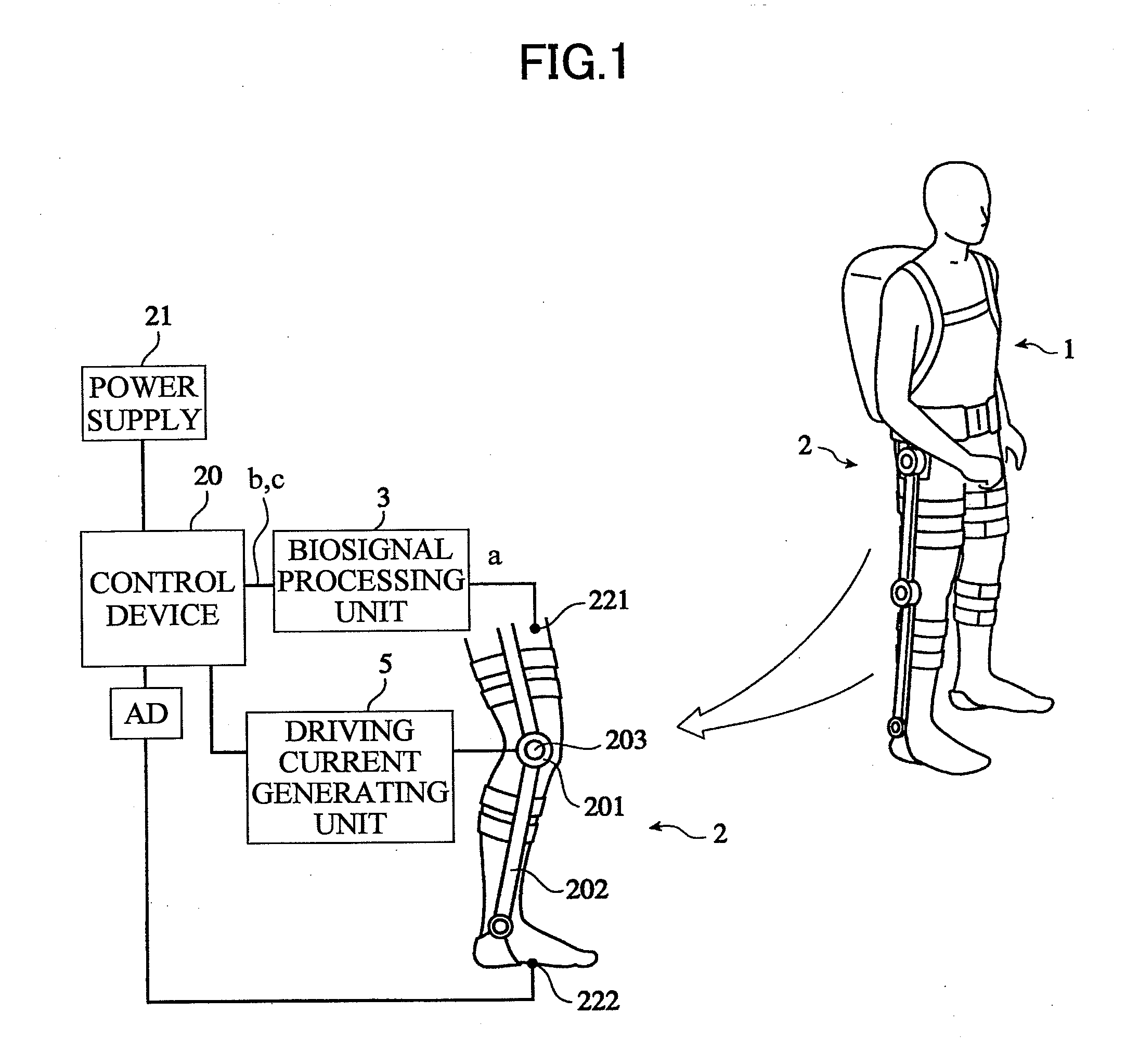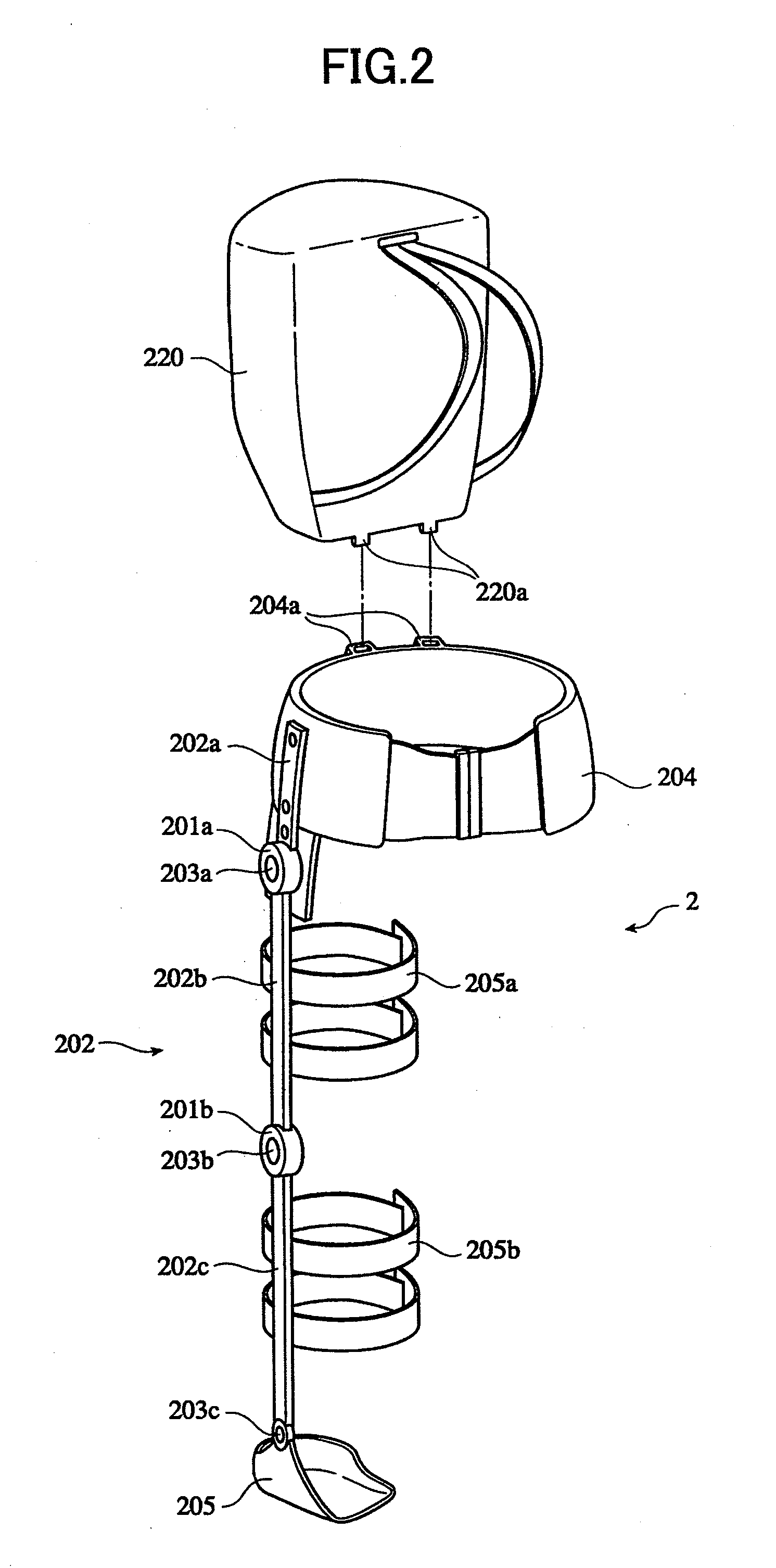Wearable action-assist device, and method and program for controlling wearable action-assist device
a technology of wearable assistance and wearable parts, which is applied in the field of wearable assistance devices and, can solve the problems of wearer's action becoming awkward, wearer's incongruity, and difficulty in performing an operation, and achieves smooth action, smooth operation, and comfortable operation.
- Summary
- Abstract
- Description
- Claims
- Application Information
AI Technical Summary
Benefits of technology
Problems solved by technology
Method used
Image
Examples
first embodiment
[1] First Embodiment
(A) Composition of Wearable Action-Assist Device
[0091]The wearable action-assist device of the first embodiment comprises an action-assist tool having an actuator, a biosignal sensor which detects a wearer's biosignal, a biosignal processing unit which acquires a nerve transfer signal and a myoelectricity signal from the biosignal, an optional control unit which generates a command signal for causing the actuator to generate power according to a wearer's intention by using the nerve transfer signal and the myoelectricity signal, and a driving current generating unit which generates a current according to the nerve transfer signal and a current according to the myoelectricity signal, respectively, based on the command signal from the optional control unit, to supply the respective currents to the actuator.
[0092]When causing the actuator to generate the power that meets the power assist rate according to the phase of the task which the wearer is trying to perform, ...
second embodiment
[2] Second Embodiment
(A) Composition of Wearable Action-Assist Device
[0142]As shown in FIG. 13, the wearable action-assist device of the second embodiment comprises the action-assist tool 2 having the actuator 201, the biosignal sensor 221 which detects the wearer's biosignal a, the physical quantity sensor 13 which detects the physical quantity of the man-machine system 10, and the optional control unit 14 which generates the command signal d (optional command signal d1) for causing the actuator 201 to generate the power according to the wearer's intention by using the biosignal a detected by the physical quantity sensor 13. Moreover, the wearable action-assist device of the second embodiment comprises the database 6 in which respective standard parameters of a series of minimum action units (phases) which constitute each action pattern of the wearer 1 classified as a task, the autonomous control unit 7 which estimates the phase of the wearer's task by comparing the physical quanti...
example 1
[0164]FIG. 19 shows the experimental result when applying the pulse current according to the nerve transfer signal in the example 1. FIG. 19 (a) shows the change of the knee rotation angle θ, FIG. 19 (b) shows the change of the biosignal which is amplified, and FIG. 19 (c) shows the change of the torque of the knee actuator.
[0165]FIG. 20 shows the experimental result when not applying the pulse current according to the nerve transfer signal in the example 1. FIG. 20 (a) shows the change of the knee rotation angle θ, FIG. 20 (b) shows the change of the biosignal which is amplified, and FIG. 20 (c) shows the change of the torque of the knee actuator.
[0166]This example is for explaining the effect of the first embodiment. When the wearer performs expansion action of the knee joint from the state in which the wearer relaxes and sits on the chair, the torque of the knee actuator 201b is measured respectively under the conditions for using the nerve transfer signal b as a trigger signal (...
PUM
 Login to View More
Login to View More Abstract
Description
Claims
Application Information
 Login to View More
Login to View More - R&D
- Intellectual Property
- Life Sciences
- Materials
- Tech Scout
- Unparalleled Data Quality
- Higher Quality Content
- 60% Fewer Hallucinations
Browse by: Latest US Patents, China's latest patents, Technical Efficacy Thesaurus, Application Domain, Technology Topic, Popular Technical Reports.
© 2025 PatSnap. All rights reserved.Legal|Privacy policy|Modern Slavery Act Transparency Statement|Sitemap|About US| Contact US: help@patsnap.com



